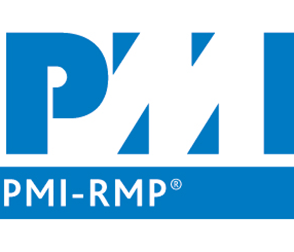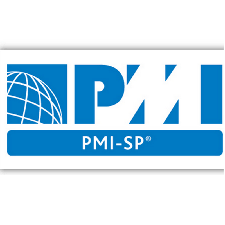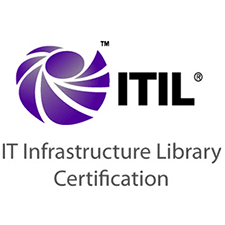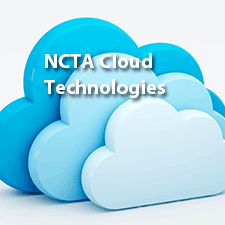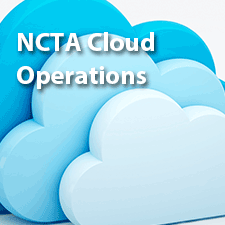PMI Risk Management Professional Certification Training
COURSE DESCRIPTION:
The PMI Risk Management Professional (PMI-RMP) Certification course is designed to help you prepare for the PMI Risk Management Professional (PMI-RMP) certification. Taking this course and using this student guide will help you prepare for certification.
Target Student:
This course is intended for team leads, directors, managers, or program and project team members with interest in developing additional skills in managing project risks. This course is also designed for individuals interested in pursuing the PMI-RMP credential.
Hardware Requirements
PC with Intel Pentium II 300 MHz processor or higher
Software Requirements
Each computer requires the following software:
Course Objectives: Upon successful completion of this course, students will be able to:
examine the fundamentals of project management.
identify project management processes.
initiate a project.
discuss the overview of project risk management.
plan risk management.
identify risks.
perform qualitative risk analysis.
perform quantitative risk analysis.
develop a risk response plan.
monitor and control risks.
identify and describe the basic concepts of ERM.
Course Outline:
Lesson 1: Understanding Project Management Fundamentals
Define Project Management Basics
Examine Organizational Influences on Project Management
Examine the Project Management Context
Lesson 2: Identifying Project Management Processes
Examine the Project Life Cycle
Recognize Process Groups
Lesson 3: Initiating a Project
Select a Project
Create a Project SOW
Create a Project Charter
Create a Scope Statement
Examine Elements of a Project Management Plan
Identify Enterprise Environmental Factors
Lesson 4: An Overview of Project Risk Management
The Concept of Risk
Identify the Project Risk Management Processes
Lesson 5: Planning Risk Management
Describe the Plan Risk Management Process
Create a Risk Management Plan
Lesson 6: Identifying Risks
Describe the Identify Risks Process
Implement the Analysis Tools and Techniques
Implement the Information Gathering Techniques
Implement the Diagramming Tools and Techniques
Identify Project Risks and Triggers
Lesson 7: Performing Qualitative Risk Analysis
Describe the Perform Qualitative Risk Analysis Process
Calculate Probability and Impact Values for Identified Risks
Assess Risk Data Quality
Analyzing Risks Qualitatively
Lesson 8: Performing Quantitative Risk Analysis
Describe the Perform Quantitative Risk Analysis Process
Describe Probability Distribution
Analyze Quantitative Risks
Lesson 9: Developing a Risk Response Plan
Describe the Plan Risk Responses Process
Identify Negative Risk Strategies
Identify Positive Risk Strategies
Identify Contingency Plans
Create a Risk Response Plan
Lesson 10: Monitoring and Controlling Project Risks
Examine the Monitor and Control Risks Process
Conduct a Risk Audit
Evaluate Risks in a Project
Lesson 11: Examining Enterprise-Wide Risk Management
Describe the ERM Framework
Describe the ERM Framework Implementation
Entrance Requirements:
Familiarity with project management concepts and some working experience with project management are required. Working knowledge of office productivity tools is desirable but not essential. Experience with a specific project management software tool is not required. It is recommended that you take the following Element K course: Project Management Fundamentals (PMF)High School Diploma/GED
- CompTIA
- CISCO
- EC-Council
As an authorized CompTIA partner, Institute of Information Technology offers up-to-date CompTIA training and certification courses. A CompTIA certification is an international industry credential.
- CompTIA A+
- CompTIA Network+
- CompTIA A+ and Network+ Boot Camp
- IT Professional Bootcamp
- CompTIA Security+
- CompTIA Server+
- CompTIA Project+
- CompTIA Cybersecurity Analyst (CySA+)
- CompTIA Train Teh Trainer (CTT+)
- CompTIA Cloud+ Training
- CompTIA PenTest+ Certification Training
- CompTIA CDIA+
- CompTIA Linux+ Powered by LPI
- CompTIA Advanced Security Practitioner (CASP) Training
- Network and System Administrator
- Computer Support Specialist
- Computer Systems Networking and Telecommunications Specialist
- Network and System Administrator Manager
- Computer Support Aadministrator
- Computer And Information Systems Security Analyst
- Computer Systems Networking and Telecommunications Administrator
- Computer Systems Networking And Telecommunications Manager
- Network And System Administrator Manager Professional
Institute of Information Technology is honored to be an authorized CISCO Network Academy Training Institute. CISCO is the worldwide leader in networking. CISCO has shaped the future of the internet by transforming how people connect, communicate and collaborate.
- CISCO MASTER
- Interconnecting Cisco Networking Devices, Part 1 - ICND1
- Interconnecting Cisco Networking Devices, Part 2 - ICND2
- CCNA Routing and Switching
- CCNP Routing and Switching
- CISCO-Individualized CCNA Routing and Switching
- CCNA Security
- CCNP Security
- CCNA Collaboration
- CCNP Collaboration
- CCNA Service Provider
- CCNP Service Provider
- Implementing Cisco Collaboration Devices
- Implementing Cisco Video Network Devices
- Troubleshooting Cisco IP Telephony & Video
- Implementing Cisco Collaboration Application
- Implementing Cisco IP Telephony & Video, Part 1
- Implementing Cisco IP Telephony & Video, Part 2
Institute of Information Technology has the honor of being an authorized EC-Council Accredited Training Center. EC-Council is the worldwide leader in Cyber Security course content. EC-Council has changed the future of the internet by transforming how people deal with and prevent cyberattack.
- Hacking Apprentice
- Hacking Professional
- Cybersecurity Master
- Hacking Master
- Certified Ethical Hacker Training Program C| EH
- Certified Ethical Hacker Practical C| EH
- Certified Network Defender Certification C| ND
- Licensed Penetration Tester Master L| PT (Master)
- Computer Hacking Forensic Investigator Certification C| HFI
- EC-Council Certified Security Analyst (ECSA) Penetration Testing
- Certified Secure Computer User C| SCU
- Certified Network Defense Architect C| NDA
- Project Management in IT Security P| MIT
- EC-Council Network Security Administrator E| NSA
- Certified Cyber Marketing Professional C| CMP
- EC- Council Certified Incident Handler Program E| CIH
- EC-Council Certified Security Specialist E| CSS
- EC-Council Certified Secure Programmer .NET E| CSP
- EC-Council Certified Disaster Recovery E| CDR
- Virtualization Technology Professional E| CVT
- EC-Council Certified Encryption Specialist E| CES
- EC-COUNCIL DISASTER RECOVERY PROFESSIONAL E| DRP
- Advanced Network Defense (CAST 614)
- Certified Application Security Engineer (CASE)
- Cyber Security Boot Camp
